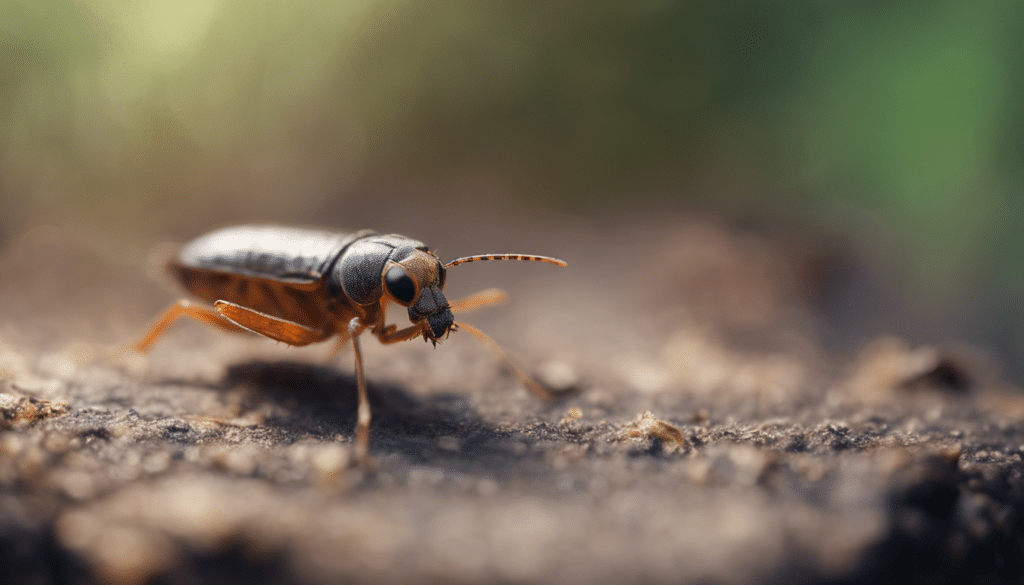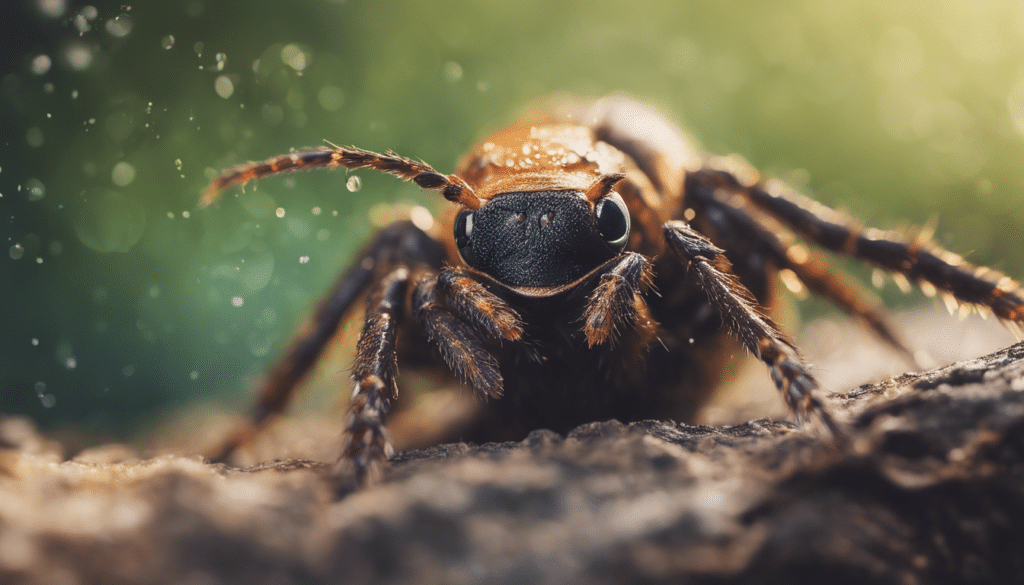Overview of Small Insect and Arachnid Ecosystems
The Intricate World of Small Predator
Within the lush tapestry of ecosystems, small insects and arachnids play pivotal roles as both predators and prey. These miniature beings form complex communities where the balance of life rests on delicate silk threads. Predatory species within these communities exert control over population dynamics, nutrient cycling, and the overall health of their environments.
Understanding Arachnid Predatory Behaviors
Arachnids, a class of joint-legged invertebrates that includes spiders, scorpions, ticks, and mites, are among the most fascinating and formidable predators. These creatures are equipped with an arsenal of specialized tools and tactics to capture, subdue, and consume their prey. Understanding their predatory behaviors offers insight into their critical role in maintaining ecological equilibrium.
- Spiders: Masters of the Silk Trap: Using their silk-producing abilities, spiders craft intricate webs that capture unsuspecting insects. Some, like the jumping spider, rely on their exceptional agility and vision to stalk and pounce on prey without the use of webs.
- Scorpions: Nighttime Hunters: With their powerful pincers and venomous stings, scorpions are adept at immobilizing prey, playing a significant role in desert ecosystems.
- Ticks and Mites: Parasitic Predators: Although not typically regarded as traditional predators, these arachnids are parasitic, feeding on the blood of larger hosts and often affecting their behavior and health.
Predator-Prey Dynamics in Insect Communities
The insect world is home to a myriad of predator species, from the praying mantis to the ladybug. Each predator insect has evolved its own methods to fulfill its role within the ecosystem:
- Praying Mantis: The Deceptive Hunter: Known for their camouflaged appearance and patient hunting methods, mantises capture prey with lightning-fast strikes of their forelimbs.
- Ladybugs: Aphid Predators: As larvae and adults, ladybugs voraciously feed on aphids and other plant-eating insects, protecting valuable plant life.
- Ant Lions: Architects of Death Traps: These insects construct conical pits in sandy soil, lying in wait at the bottom for unsuspecting ants and other insects to slide in and become their meals.
The Impact of Small Predators on Ecosystem Health
The role of small predators within their ecosystems cannot be overstated. As biological control agents, they regulate the populations of their prey, preventing the overconsumption of vegetation and the subsequent collapse of local food chains. Furthermore, their predatory activities contribute to biodiversity by allowing a greater variety of species to flourish without domination by a single prey species.
Human Influence and the Future of Small Predator Ecosystems
While these small predators are robust components of their ecosystems, they are not immune to the impact of human activities. Habitat loss, pesticide use, and climate change are among the factors that threaten these delicate predator-prey relationships. The sustainability of small insect and arachnid populations is vital for the preservation of global biodiversity and ecological health, underscoring the importance of conservation efforts.
In summary, while often overlooked, the world of small predators is an integral piece of the vast jigsaw that composes our natural world. Protecting these tiny titans and understanding their interactions within ecosystems is not only fascinating but essential for ensuring a balanced and thriving planet.
Common Predators of Insects in Their Natural Habitats

In the intricate web of the natural world, insects are a fundamental link in the chain of life. They serve as crucial decomposers, pollinators, and prey. The predators of these tiny beings are as varied as the environments they inhabit, and their interactions play a pivotal role in maintaining the delicate balance of ecosystems.
Aerial Hunters: Birds on the Prowl
One of the most iconic insect predators are birds, which employ remarkable speed and agility while hunting. Songbirds, swifts, and swallows often snatch insects mid-flight, demonstrating pinpoint accuracy and timing. Raptors such as kestrels, despite their larger size, partake in this feast too, targeting grasshoppers and other sizeable insects on the ground or in the air.
Cunning Arachnids: Spiders’ Ingenious Traps
Spiders, nature’s master weavers, construct intricate webs across paths and between foliage to catch unsuspecting insect travelers. Their strategies are diverse, spanning from orb webs that glisten with dew to trap insects to jumping spiders that actively hunt with incredible precision. While not all spiders weave webs, each species has evolved unique and effective hunting methods.
Insect vs. Insect: Cannibalistic Crusaders
The insect world is a brutal place, where predators and prey can often look remarkably similar. Carnivorous insects such as praying mantises, ladybugs, and various beetles are ruthless hunters, preying on other insect species with astonishing ferocity. These voracious feeders play a crucial role in containing populations, thereby preventing the overabundance of certain insects.
Nocturnal Watchers: Bats on Bug Patrol
Under the cloak of darkness, bats take to the skies, executing an essential service in controlling insect populations. Using echolocation, bats navigate and hunt with a precision that is matched by few other mammals, consuming impressive numbers of moths, beetles, and other night-flying insects in their nightly pursuits.
Aquatic Assassins: The Role of Fish and Amphibians
The still waters of ponds and streams teem with life and the ever-present drama of predation. Fish and amphibians are significant predators of aquatic insects and their larvae. Frogs, with their lightning-quick tongues, snatch insects from both water and land, whereas fish like trout swirl beneath the surface, feasting on insect larvae before they can ever take flight.
Putting it All Together: The Impact on Ecosystems
The presence of insect predators is a testament to the robustness and complexity of natural habitats. These hunters not only regulate insect populations but also serve as a barometer for environmental health. A diverse array of predators indicates a strong, balanced ecosystem, underscoring the truth that every creature, no matter how small or seemingly insignificant, has a vital part to play in the grander narrative of nature.
In conclusion, the variety of common predators in the wild is extensive and instrumental to the natural order of life. Their relentless pursuit of insects ensures the continuous operation of ecological processes and maintains the dynamic equilibrium that allows countless species, including humans, to thrive.
Arachnid Predation: A Look at Natural Enemies

Arachnids, those skilled predators of the invertebrate world, have claimed dominance in various ecosystems due to their exceptional hunting abilities and survival strategies. However, the circle of life does not exempt these eight-legged hunters from becoming prey themselves. There’s a fascinating array of natural enemies that stand as significant threats to arachnid populations.
Avian Adversaries: Birds of Prey
Among the most formidable predators of arachnids are birds. Quick and agile, these avian species have honed their skills, allowing them to expertly snatch spiders from their webs or the ground. Species such as the American kestrel and various warblers actively feed on arachnids, their sharp eyesight helping them to spot these creatures from afar. The scenario is a classic act of aerial predation where speed and surprise are key elements.
Mammalian Menace: Mammal Predators
No less significant are the mammals that include arachnids in their diet. Small insectivorous mammals, such as shrews and certain species of bats, capitalize on catching these creatures during their nightly forays. The shrew, with its pointed snout, delves into crevices and soil to extract spiders, while echolocation enables bats to detect and catch flying spiders on the wing.
Reptilian Rivals: The Cold-Blooded Predators
Reptiles, too, pose a threat to arachnid populations. Lizards, in particular, have a penchant for making a meal of spiders and scorpions. The lizard’s ability to remain motionless and blend into its surroundings provides it with the perfect ambush strategy. Additionally, snakes like the North American racer are known to consume spiders, their stealth and striking speed being their greatest assets.
Invertebrate Interactions: Predation Within the Phylum
Not all dangers to arachnids come from higher on the food chain. Other arachnids, such as larger spiders and certain scorpion species, often turn cannibalistic, preying on their kin. Predatory insects such as praying mantises and centipedes also pose a substantial risk to spiders. They use their powerful appendages to capture and immobilize their eight-legged prey.
Intervention of Insectivorous Plants
Carnivorous plants add another layer to the complex web of arachnid predation. With deceit and passive hunting mechanisms, plants like the Venus flytrap and sundews can entrap and digest unsuspecting spiders. They lure arachnids in with sweet secretions or colorful adornments only to ensnare them with their specialized leaves.
Human Hunting: A Dominant Threat
However, the single most impactful predator of the arachnid world may well be humans. Although not for consumption like the other predators listed, habitat destruction, pollution, and indiscriminate use of pesticides put immense pressure on arachnid populations. Human activities have inadvertently made them some of the most threatened creatures in terms of biodiversity loss.
In conclusion, the life of arachnids, although that of a predator itself, is fraught with dangers from a variety of other predators. Both in the air and on the ground, these creatures face constant threats from creatures big and small. The dynamic struggle within ecosystems is a test of adaptability and survival, showcasing the intricate balance of our natural world.




